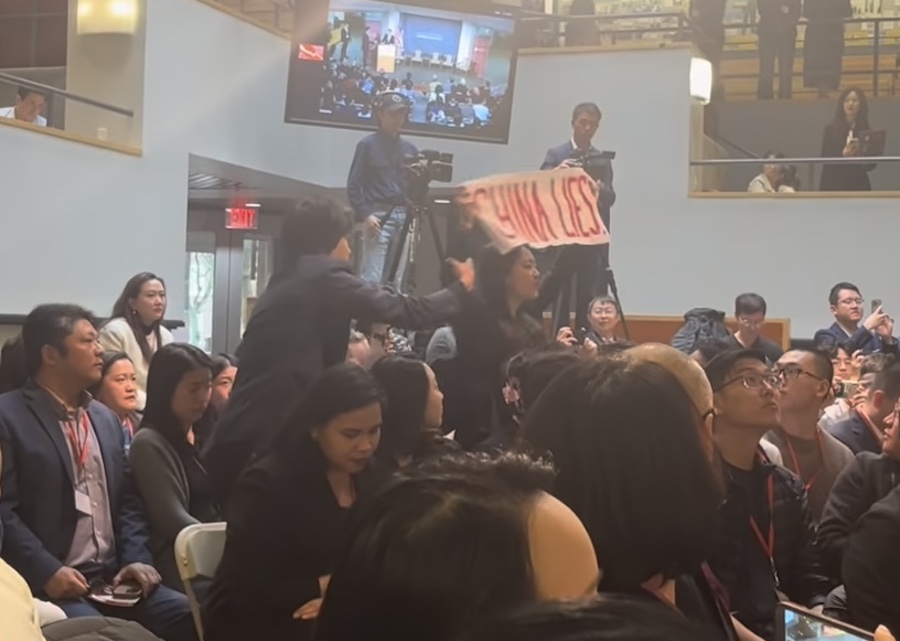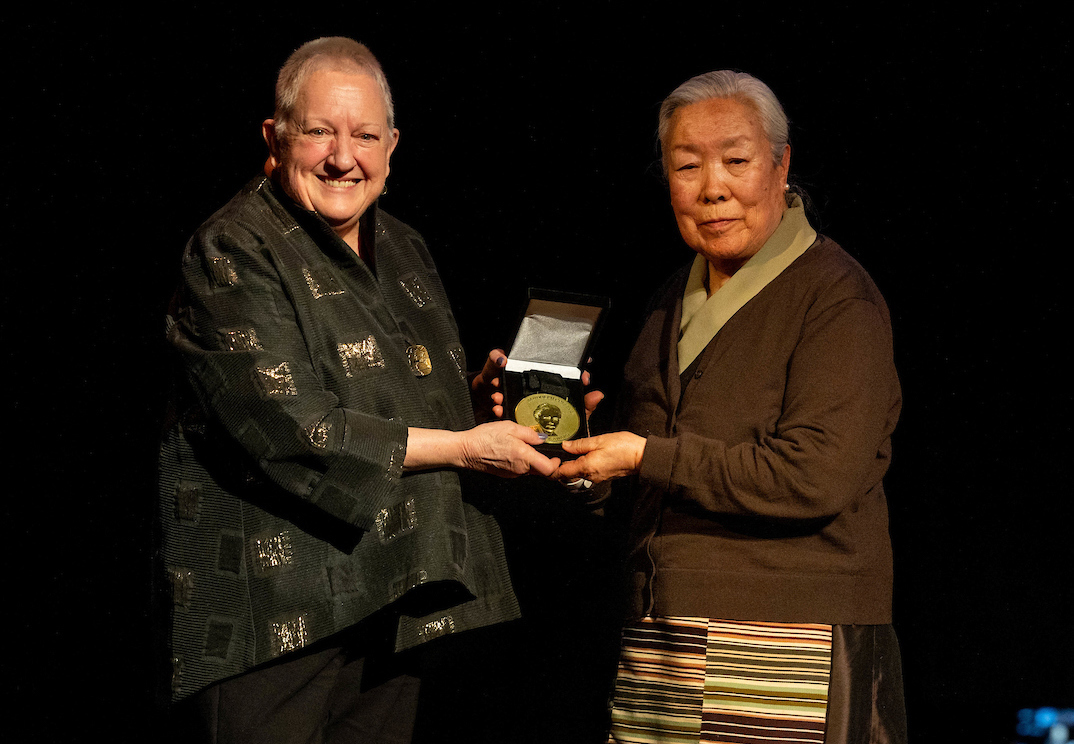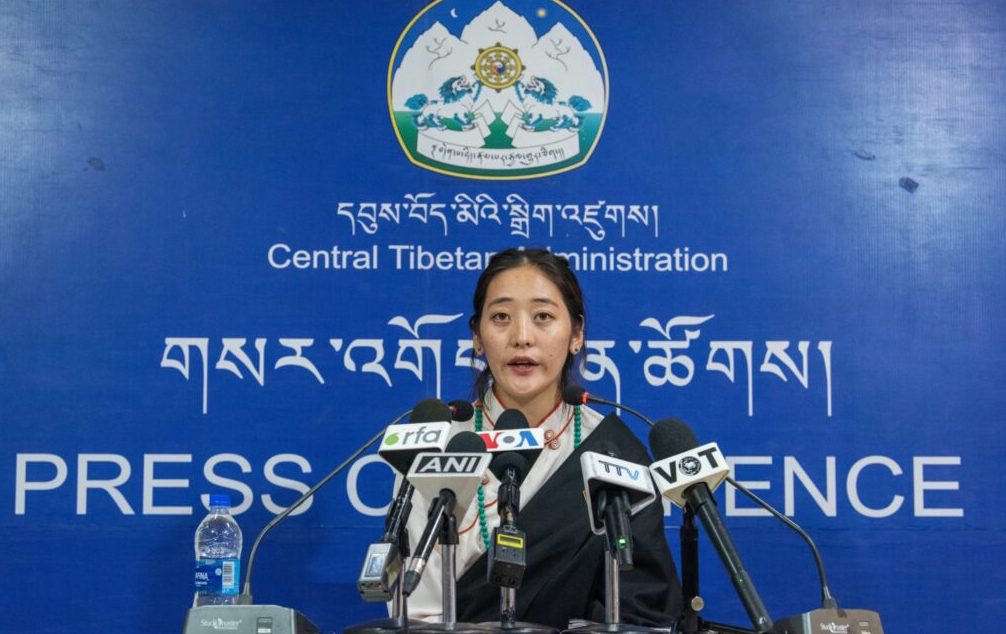American-born children live the language and culture of their occupied homeland
Kate Linthicum
The Oregonian Staff
Tenzin Seldon turns expectantly toward the roomful of shifting, whispering students, her question hanging in the wet mountain air. “What year is it in the Tibetan calendar?” she asks, and a smattering of skinny arms rise hesitantly. One by one, the kids call out wrong guesses, and the Tibetan elders watching from the back of the room cluck in disappointment.
They know that the future of the Tibetan culture — and the struggle for an independent Tibet — depends on kids such as the ones sitting here at the Northwest Tibetan Cultural Association’s annual summer camp, a weeklong event held in rural Skamania County. About 20 Tibetan kids born in America have come to the conifer-clad Washington mountains in response to a problem faced by an increasing number of Tibetan immigrants: How do children, likely to know more about the new iPhone than the principles of Buddhism, learn to appreciate a homeland that exists only in their imagination?
Unlike other immigrants, many Tibetans are more interested in preserving tradition than climbing America’s economic ranks. Older Tibetans are intent on freeing their country from Chinese rule that dates to 1959, and they know that living in America puts them — and their children — at a great distance from that struggle.
Tsetan Wangchuk, a soft-spoken 49-year-old who fled Tibet for India as a young boy, says the goal is to prep American Tibetans for their return to the homeland.
“We’re doing the best we can so that when they grow up they won’t feel foreign to their culture,” he says.
Tibetan elders have put an emphasis on family and community to recover tradition, and the home is the center of this effort. Many families choose to speak only Tibetan in the home, which they decorate with traditional tapestries, elaborate altars and poster-sized photographs of Lhasa, Tibet’s spiritual center.
The whole house is often infused with the rich smells of traditional foods, especially momos, the savory, bite-sized dumplings typical of Tibet.
Sunday-school classes, dinners and picnics offered by the cultural association also play a crucial role. They teach kids how to write and understand the Tibetan alphabet, perform traditional dances and sing Tibetan songs. They also allow them to see their countrymen.
“If you don’t come to our center,” Wangchuk says, “you won’t see a Tibetan for a month.”
The morning is dim and rainy, with mist settled lightly on the treetops bordering the camp. The scene looks nothing like Tibet, with its expansive skies and dusty plateaus, but the volunteers gathered have done their best to transform it.
About 400 Tibetans live in the Northwest, making it one of America’s biggest Tibetan communities. In the 40 years since the first immigrants arrived, they’ve established an impressive framework to teach youth about the homeland.
This year’s Tibetan camp was hosted in collaboration with the Office of Tibet, the New York-based American arm of the Tibetan exile government. It sent two young teachers, including Seldon, to the Skamania camp to teach.
Installing an altar was one of the campers’ first priorities, and incense that smells like damp dirt smolders among small silver offering bowls and a poster of the Dalai Lama, the Tibetan spiritual leader.
The day before, the kids colored their own prayer flags, ornamenting the bare, fluorescent-lit kitchen with their construction-paper prayers. But instead of traditional mantras in the center of the flags, they’ve scrawled their personal goals in shaky crayon.
“For the world to have peace,” reads one.
“Tibet wins freedom,” says another.
A bright yellow flag touts a different kind of dream: “Get a scholarship for college.”
The first generation of Tibetans to come of age in America carries a complex mix of values. Young Tibetans say that typically American qualities such as materialism and an independent, dog-eat-dog attitude compete with the Tibetan worldview, which emphasizes modesty and community.
“It’s like a constant identity crisis here,” said Sherap Tharchen a few weeks ago while chatting with friends outside the cultural association’s Northeast Portland temple.
The twentysomethings, who were in town for the Tibetan Youth Congress’ annual American conference, were clad in chupas, traditional Tibetan attire that looks like a cross between a kilt and a kimono. Some were dotted with tattoos, others wore hip, square glasses. Most had heavily styled hair.
They were optimistic about the Tibetan cause, and they spoke excitedly about Tibetans using typically American media — such as summer camp and Sunday school — to spread awareness of their traditions.
“We’re trying to integrate kids into the culture here while having them maintain their Tibetanness,” said Samdup Khangkar, who organizes sports competitions for Tibetan kids.
Later that night, Tsering Kheyap, a 25-year-old born in Astoria, explained how she hoped to use the skills she’s learning in America to one day help the Tibetan cause.
“If we go back, we can’t have a lot of uneducated folks,” said Kheyap, who graduated from Dartmouth. “We need people who can run things.”
Kheyap looked elegant in the woman’s version of the chupa, and she spoke with the deliberate eloquence of a lawyer, which she’s studying to be.
But despite her outside composure, she said inside she’s constantly sorting through contradictory messages from her family and American society. The Tibetan notion of “success” revolves around Tibet gaining independence, for example, while in America success means a college education or a well-paying job.
“Your desires with preserving traditions,” she said, “are in conflict with your desire to make it here.”
The rain stops and wisps of sun filter into the Skamania County woods. Three elders head outside and hunch before a sputtering fire of juniper branches, rasping prayers. Inside the mess hall, the kids gnaw their lips in concentration and ping away at traditional Tibetan guitars for their morning music lesson.
The generation gap among Tibetan Americans is vast, with a daunting language barrier and wildly different experiences separating the elders who fled Tibet from their American-born grandkids. The older generation faces a particular challenge in explaining Tibet’s history to the youngsters. Telling about the Chinese occupation and ancestors who died in the ensuing battles could inspire political activism or simply trauma.
“They say happy things at first and then they say sad things because they don’t want us to get mad and sad about the bad things that happened in Tibet,” says Tenzin Choenyi, describing how her parents and grandparents have taught her about her culture.
The Vancouver 10-year-old said the hardest part of camp wasn’t learning about her forebears’ violent past, but simply talking in Tibetan.
“I’m used to speaking English at school,” she says in a broad American accent punctuated by “ums” and “likes.” “When I answer a Tibetan question, like, sometimes it’s easy and sometimes it’s hard.”
Language is a major concern to the oldest generation, who say that hope for a free Tibet will die out when the language does.
“Tibetan culture, language and music are very important,” Tobgey Gyalnub said at a cultural-association celebration a few weeks ago. “A time is coming in Tibet where people might lose that; so we have to be very vigilant to preserve that.”
Gyalnub is 76, and his smile glimmers with a scattering of silver-capped teeth. With turquoise jewelry around his neck and frayed red yarn in his hair, he looks like he never left Tibet. But he fled to India after watching the Chinese invade and occupy his village.
Migmar Gyalnub, 47, who translated his father’s quavering Tibetan, said the older generations were saddled with duty to teach their kids about Tibet.
“It is our moral responsibility that they should know it,” he said, his voice rising. “If we don’t, it’ll be our failing as Tibetans.”
Kate Linthicum: 503-294-5970. katelinthicum@news.oregonian.com









